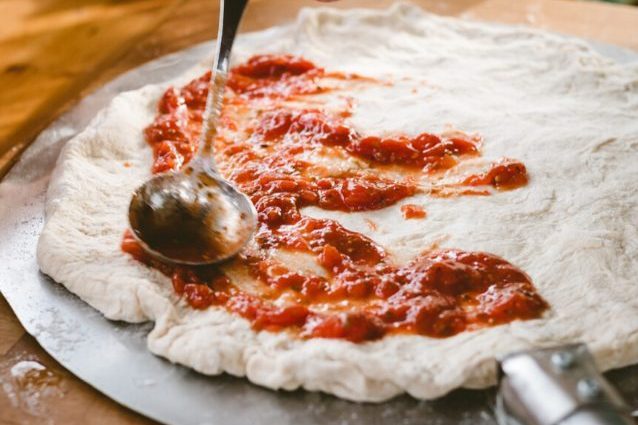Pizza with dry yeast: how to make the dough with the right suggestions and tips
Dry yeast or powdered yeast, on the other hand, can be preserved much longer and, unlike fresh yeast, must be reactivated in a mixture of warm water and sugar, before being used.
;Resize,width=742;)
Preparing the pizza dough with dry yeast is an excellent alternative if you don't have fresh brewer’s yeast in the refrigerator. Fresh brewer’s yeast has always very close expiration dates, so it is common not to have it by chance in the kitchen. Dry yeast or powdered yeast, on the other hand, can be preserved much longer and, unlike fresh yeast, must be reactivated in a mixture of warm water and sugar, before being used.
Preparing the pizza dough with dry yeast is an excellent alternative if you don't have fresh brewer’s east in the refrigerator. Fresh brewer’s yeast has always very close expiration dates, so it is common not to find it by chance in the kitchen. Dry yeast or powdered yeast, on the other hand, can be preserved much longer and, unlike fresh yeast, must be reactivated in a mixture of warm water and sugar, before being used.
The freeze-dried yeast has the same rising time as the normal one and you can use it in the same way for all your doughs. Making tasty pizzas at home will be as quick and easy as ever. Let’s see then how to prepare the pizza dough with dry yeast, with some simple suggestions and tips.
How to use dry yeast for pizza dough

To make pizza with dry yeast, dip 7 grams of dry yeast in half a glass of warm water and add a teaspoon of sugar. Mix well and let stand a few moments, while the yeast begins to foam.
Sift 500 grams of flour on a wooden cutting board, or on a marble worktop. Create a small hole in the center and pour in the dry yeast dissolved in warm water. Work the dough with your fingers trying to mix the ingredients well, then trying to create a homogeneous dough. Add three tablespoons of extra virgin olive oil, a pinch of salt and warm water, if the dough is dry.

Form a compact dough and with a knife make two cuts in the center as if they were a cross. Let the dough rise well wrapped in a cloth, in a dry place at a warm temperature for about two hours. When the dough has doubled, divide it in two and let it rise for 30 minutes.

Divide the dough into 4 smaller loaves and start working the dough with your hands, helping yourself with a rolling pin. Season as you prefer, with tomato sauce, mozzarella, basil and the addition of ingredients of your choice. Bake in a preheated oven at 200° for a crispy and golden pizza.

What is dry yeast in powder or granules
Dry brewer's yeast, or freeze-dried, is a yeast in powder or granules, but it has the same principle as fresh one. While fresh yeast is typically preserved in the refrigerator in the form of small piece, dry yeast is usually sold in sachets.
The advantage of the powdered yeast is that it has a much longer expiration date than the fresh one and, if stored in a dry place, it can last up to a year. However, the dry yeast must be reactivated to work. Dip it in warm water and sugar and use it for your dough.
How to replace fresh yeast with dry yeast
Matching the dose of fresh yeast with that of dry yeast is very simple. Consider that a piece of fresh brewer's yeast is typically 25 grams. A sachet of baking powder, however, weighs about 7 grams. To be precise, about 23 grams of fresh yeast correspond to a sachet of powdered yeast.
Dry yeast can be used in exactly the same way as fresh yeast. Once reactivated, it has the same rising time. In both cases, avoid yeast that has already expired or that is very close to expiration, which makes leavening less active.
Tips
To help the dough of your pizza with dry yeast increase its volume, put it to rest in a warm place. For example, you can preheat the oven to the minimum temperature, turn it off and leave the dough to rest in the heat. Alternatively, put your dough in a bowl and place it on a pan full of hot water, without immersing it.
To prepare the pizza dough with dry yeast, adjust with the warm water to add. Each quantity is indicative, it depends on how the water acts on your flour. Always keep a full glass near, which you can add if the dough is too dry.
;Resize,width=767;)

;Resize,width=712;)
;Resize,width=712;)
